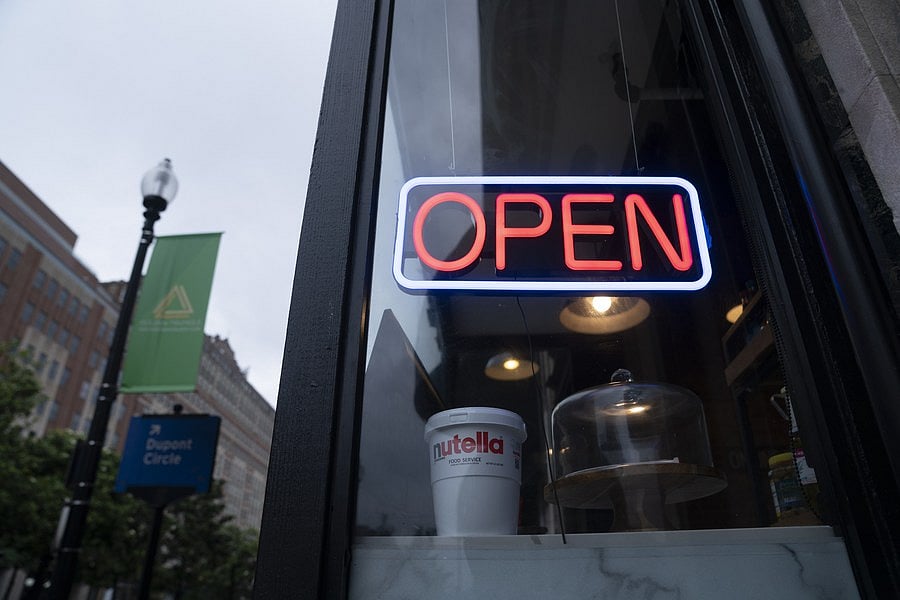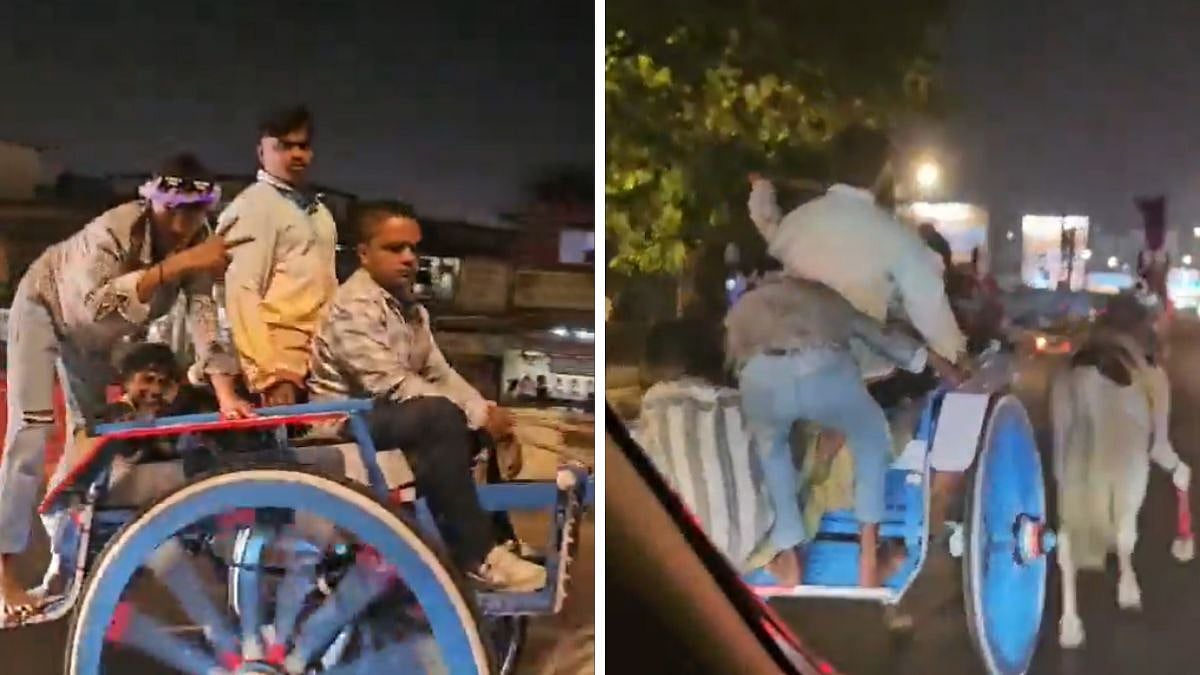No longer patient in the face of their crippled economies, all U.S. states are now rushing to reopen although the novel coronavirus remains uncontained in the country.
Meanwhile, Americans across the nation have taken to the streets to protest against racial injustice, many of whom do not practice social distancing, wear masks, or observe other restrictions while protesting.
As over 20 states saw rising daily new COVID-19 cases over the past week, an influential model predicts that a second wave of the outbreak may start in September, with the death toll expected to strikingly culminate at over 200,000 by October 1.
PANDEMIC FAR FROM OVER
Over the last 14 days, although the curve of the seven-day average new cases has flattened nationwide and those of previous hotspots like New York, New Jersey and Massachusetts have trended down, 21 states -- most notably those in the Sun Belt stretching across the Southeast and Southwest regions -- have seen cases surge anew during the same period.
What was particularly alarming was that daily confirmed cases in Florida, Texas and Arizona on Tuesday all reached record highs, each reporting over 2,000 cases, as they ramped up testing and loosened restrictions to allow businesses to reopen.
Despite the worrisome uptick, Florida Governor Ron DeSantis, whose "Safer at Home" order was less stringent than the lockdown measures adopted in other states, told a news conference Tuesday that he's not going to shut down the state.
Earlier on Tuesday, physicians in the state capital Tallahassee urged DeSantis to mandate the use of face masks, saying that quarantine fatigue due to months of lockdown has made Floridians drop their guard against the virus.
At the national level, the latest model by the Institute for Health Metrics and Evaluation (IHME) at the University of Washington predicts that total deaths caused by COVID-19 could reach anywhere from 171,000 to 270,000 by Oct. 1, with a possible figure in between at about 201,129.

Photo taken on June 6, 2020 shows a reopened LA Fitness club in northern outskirts of Dallas, Texas, the United States. (Photo by Dan Tian/Xinhua)
The IHME, a research institute once referenced by the White House for coronavirus projections, also expects daily death toll to start rising again in September, bringing an expected second wave in the fall.
"What's underlying that is two factors: The steady rise in contact rates, steady rise in mobility, and the likely continued relaxation of mandates over the course of the summer, combined with the increasingly clear signal that seasonality is important," IHME Director Christopher Murray said at a press briefing on June 11.
Robert Schooley, professor of medicine with the Division of Infectious Diseases and Global Public Health at the University of California, San Diego told Xinhua that the IHME model "seems entirely plausible."
"Epidemic curves in parts of the country that opened earliest with the least effective political leadership that have the most disdain for science are seeing sharp rises in cases of COVID-19," he said.

Demonstrators protest against police brutality on Times Square in Manhattan of New York, the United States, on May 31, 2020. (Xinhua/Wang Ying)
REOPENING, DEMONSTRATIONS ADD TO RISKS
The coronavirus pandemic is taking a severe toll on the U.S. economy as the country has been in lockdown mode for three months, during which over 40 million people lost their jobs, and small businesses whose cash flows quickly evaporated bore a particularly acute brunt.
Facing potentially disastrous budget shortfalls, state and local governments remain in despair, rushing to bring life back to normal. However, back in early May, public health experts warned that none of the states beginning to reopen then met the federal criteria for doing so.
Those criteria, set by the U.S. Centers for Disease Control and Prevention in May as a guidance, include a 14-day decline in cases, the ability to do contact tracing, a health system that can take care of patients and provide enough protective gear for health care workers, as well as the capacity to conduct enough rapid testing.
"We risk complacency in accepting the preventable deaths of 2,000 Americans each day. We risk complacency in accepting that our health care workers do not have what they need to do their jobs safely. And we risk complacency in recognizing that without continued vigilance, we will again create the conditions that led to us being the worst-affected country in the world," said Catlin Rivers, a scholar at Johns Hopkins Center for Health Security, during a House Appropriations Committee hearing on May 6.

Demonstrators march across Brooklyn Bridge during a protest over the death of George Floyd in New York, the United States, June 6, 2020. (Photo by Michael Nagle/Xinhua)
Sadly though, states seemed to have ignored those warnings. Arizona, for instance, lifted the stay-at-home order on May 15, and people flocked to bars, restaurants, pools and gyms shortly afterwards.
Arizona not only failed to meet the 14-day decline requirement, but also did not have a positivity rate of 5 percent or lower, another precondition for economic reopening. Consequently, the number of cases in the state skyrocketed by nearly 300 percent between May 1 and June 11.
"Frankly, the stay-at-home order should not have been lifted (on May 15)," said Matthew Heinz, a hospitalist in Tucson, Arizona. "You shouldn't even consider a staged reopening until you're at or below 5 percent. Arizona never, ever did that."
In addition, the anti-police brutality protests that swept the nation risked possible protraction of the pandemic, as a sizable number of demonstrators did not abide by social-distancing or face-covering rules.
"It is the perfect set-up for the spread of the virus in the sense of creating some blips which might turn into some surges," Anthony Fauci, director of the National Institute of Allergy and Infectious Diseases, said of the protests during an interview with radio station WTOP-FM on June 5.

TURNING POINT A DISTANT VISION
Although public health experts differ on whether a second outbreak will occur in the United States, they share the view that the turning point in the fight has yet to come.
"I fear that we will not see a turning point for a year," Stanley Perlman, a professor of microbiology and immunology at the University of Iowa, recently told Xinhua. "Balancing control and economic measures are key" to preventing the contagion from further spreading, he added.
For his part, Fauci told British newspaper the Telegraph last week that normality in the United States will only return "within a year or so," adding that he didn't believe such a comeback will happen this winter or fall.
In an op-ed published by The Wall Street Journal on Tuesday, U.S. Vice President Mike Pence denied the advent of a second wave, calling relevant prediction the media's "fear mongering."
During a call with the nation's governors on Monday, Pence told them to explain to their citizens that the increase in testing was the reason for "some marginal rising number" of cases, turning a blind eye to the fact that the growing rate of testing indicates communities have not been acting quickly enough to identify and isolate cases.
As the administration shifted its attention from addressing the coronavirus to reopening the economy and resuming President Donald Trump's re-election campaign, there's much more for public health experts to fear.
"We may be done with the pandemic, but the pandemic is not done with us," Ashish Jha, director of the Harvard Global Health Institute, said Tuesday during a dialogue hosted by news website STAT.
The American people "are feeling a certain sense of apathy," Ashish said. "The reality is that the virus is with us. The reality is that the first wave only hit a small number of places -- now it's coming to every other place. It's coming to a county or a city or a state near you."









